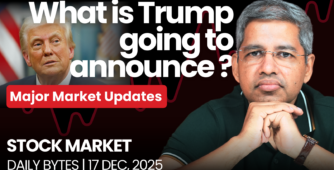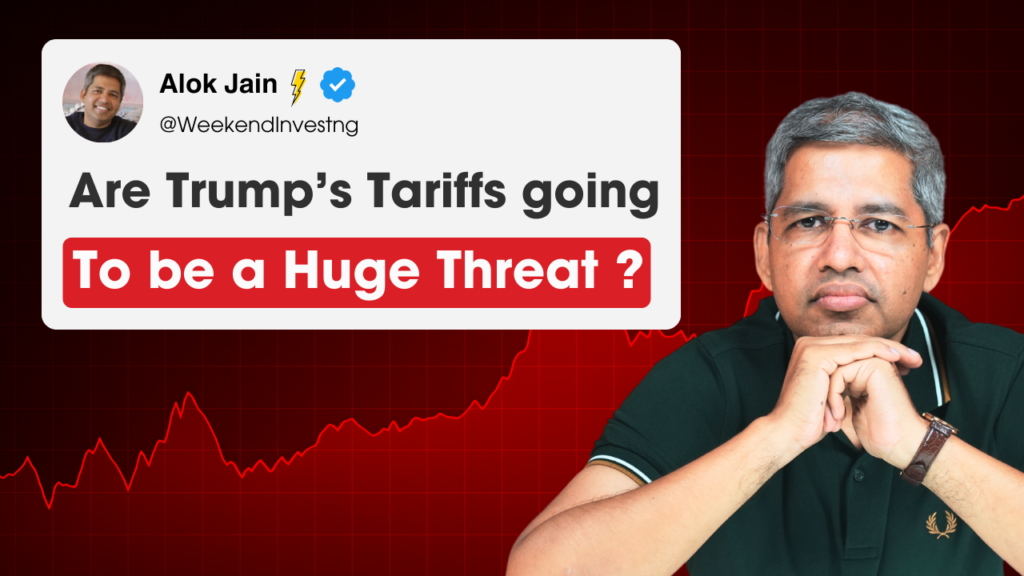
The Fear of Trump Tariffs Is Behind Us
On April 2nd, the anticipated fear surrounding Trump’s tariffs has mostly dissipated. The tariffs have been imposed, and reciprocal tariffs have also been levied. The anxiety that the market had been building up to regarding this issue — thinking that the market would face an impending collapse on the night of April 2nd — has not come true. In fact, markets have remained relatively stable, and many experts are suggesting that India could be a potential beneficiary of the current global tariff structure. We’ll explore this more in the second half of the blog
Where is the market headed?
Market Overview
Now, let’s look at how the market has performed today. Surprising many, the Nifty index is down only 0.35% for the day. Gift Nifty, which many follow over the weekend, had shown about a 1.5% decline earlier, but the markets opened lower at 23,150, which turned out to be almost the low of the day. It then recovered nicely, which is reassuring. Even in a narrative where many expected panic, the market has not collapsed. This price behavior suggests that the market isn’t in a full-blown panic mode right now.
Interestingly, we’re seeing the formation of an inverted head and shoulders pattern on the charts, which, if completed, could indicate some potential upward movement in the coming days. But that’s a story for another day.
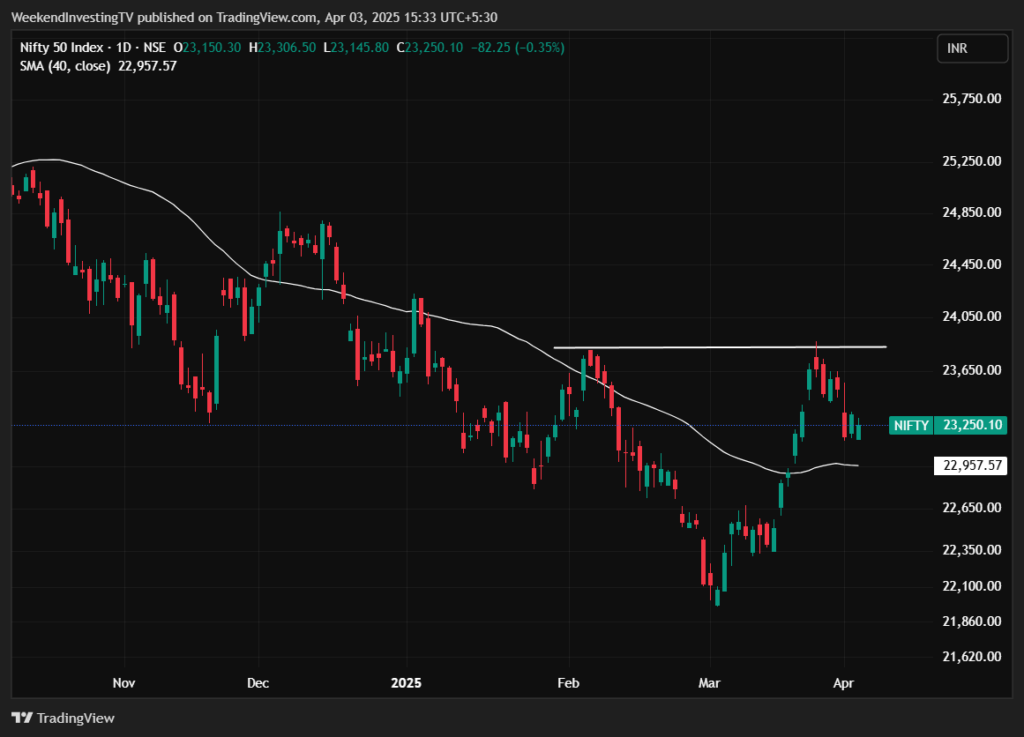
Nifty Next 50
Looking at specific sectors, Nifty Junior actually closed in the green, up 0.03%, essentially nullifying the negative narrative around the tariff impact.
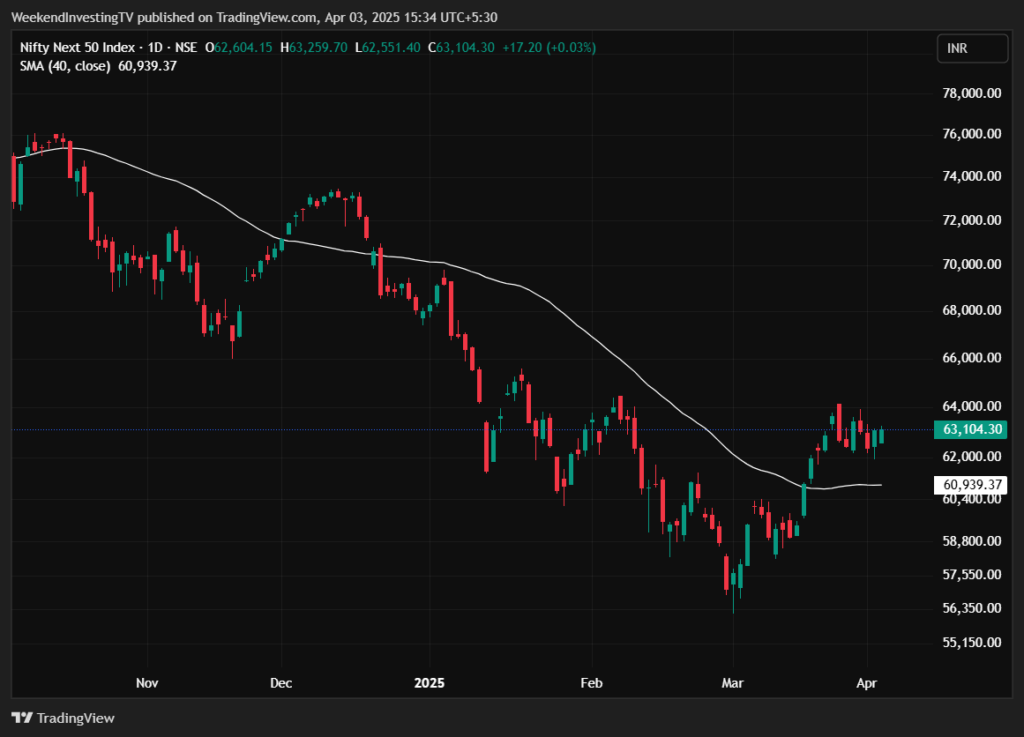
Nifty Mid and Small Cap
Mid-caps rose 0.2%, and small-caps surged 0.7%, hitting a six-day high — a phenomenal achievement in such uncertain times.
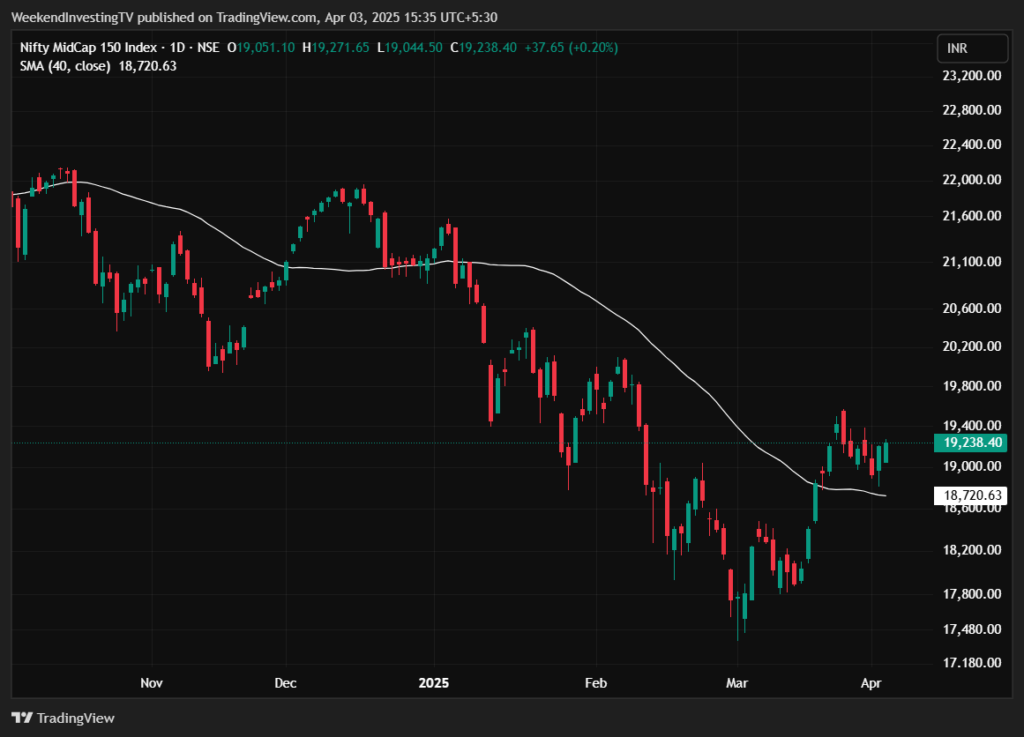
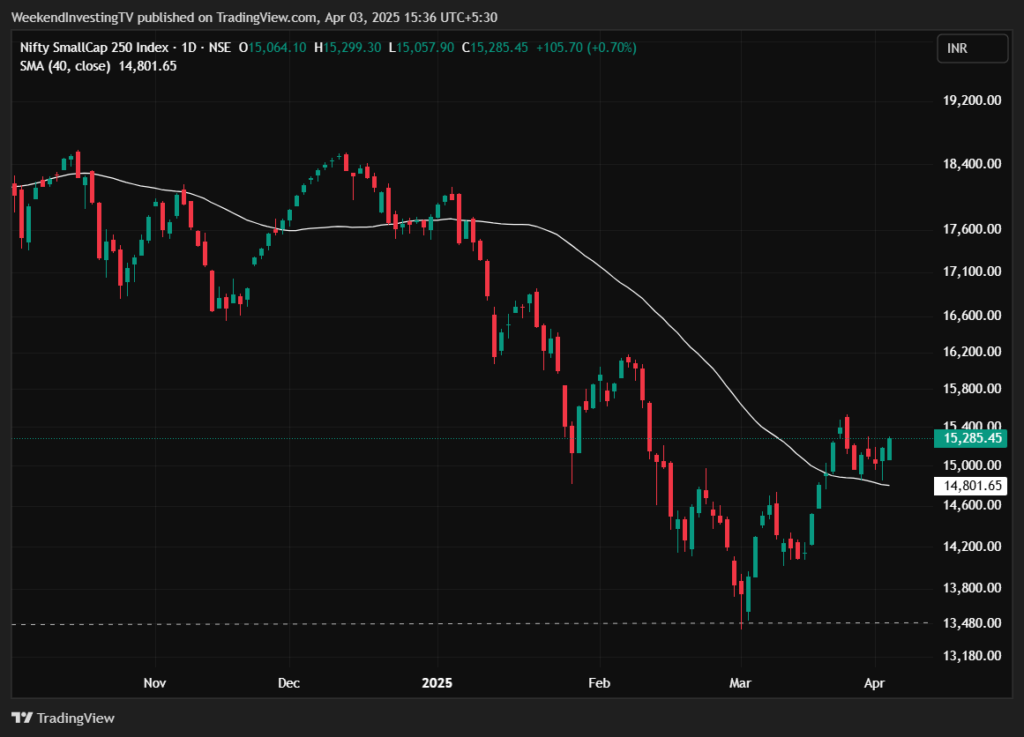
Nifty Bank Overview
Bank Nifty was up nearly 0.5%, also marking a four-day high. Overall, things are looking quite decent in the markets.
It seems like the market is, as often seen, climbing the “wall of worry.” Many market participants are convinced that the market has to go down, but as of now, that hasn’t been the case.
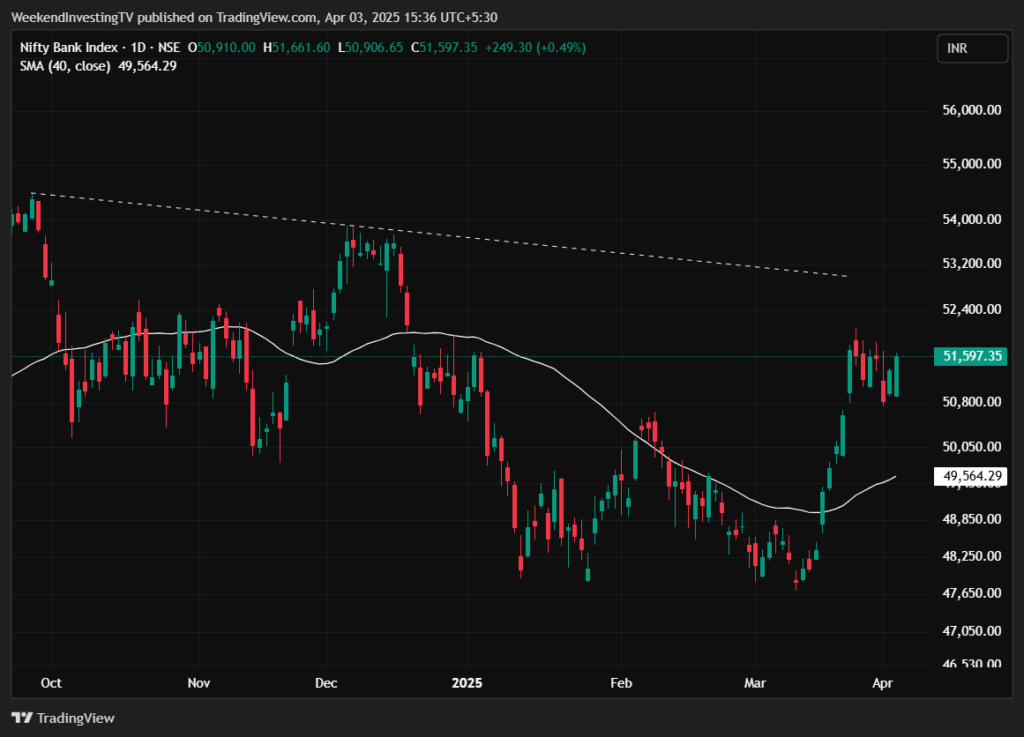
GOLD
On the commodity front, gold hit a new high of nearly ₹92,000, but I sense it may be due for some rest. Gold often hits tops or bottoms on days with heavy news, so it’s possible that gold may have reached an intermediate top for now.
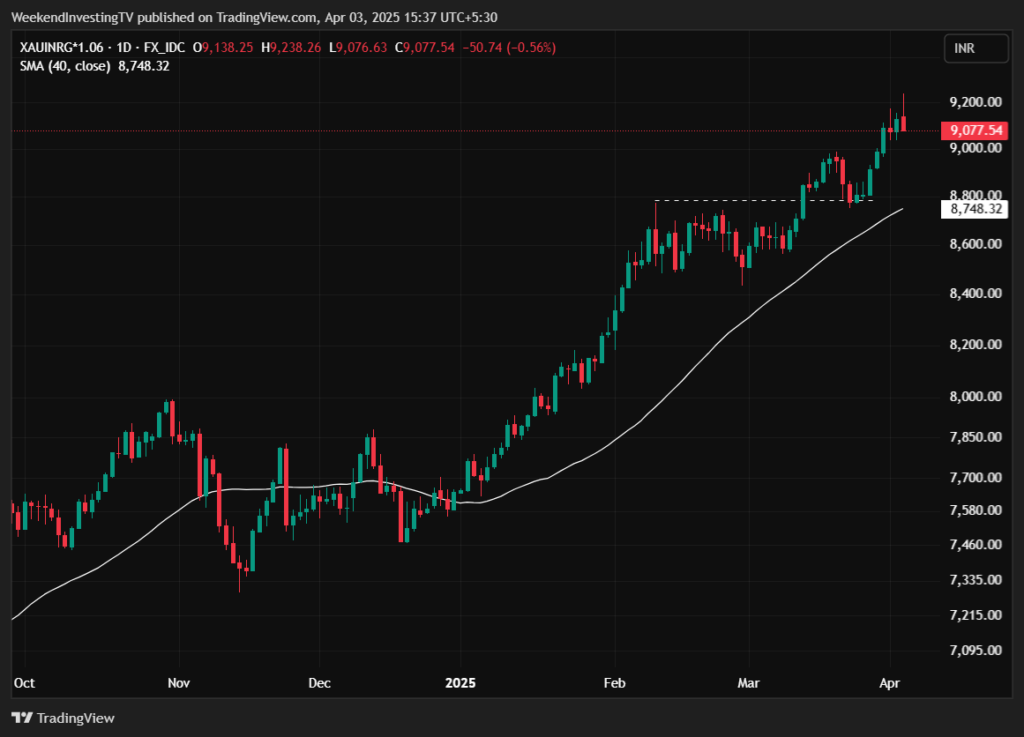
Advance Decline Ratio
The market breadth today was also reasonable, with 302 stocks advancing and 198 stocks declining.

Heat Maps
The heatmap, however, showed some big losers — TCS, Infosys, HCL Tech, Wipro, and Mahindra Tech all lost around 3-4%. Tata Motors also fell by 2.67% due to concerns over tariffs on EVs. ONGC was down by 2.92%, but there were some gains in stocks like UltraTech Cement, pharma companies, NTPC, and Adani Enterprises.
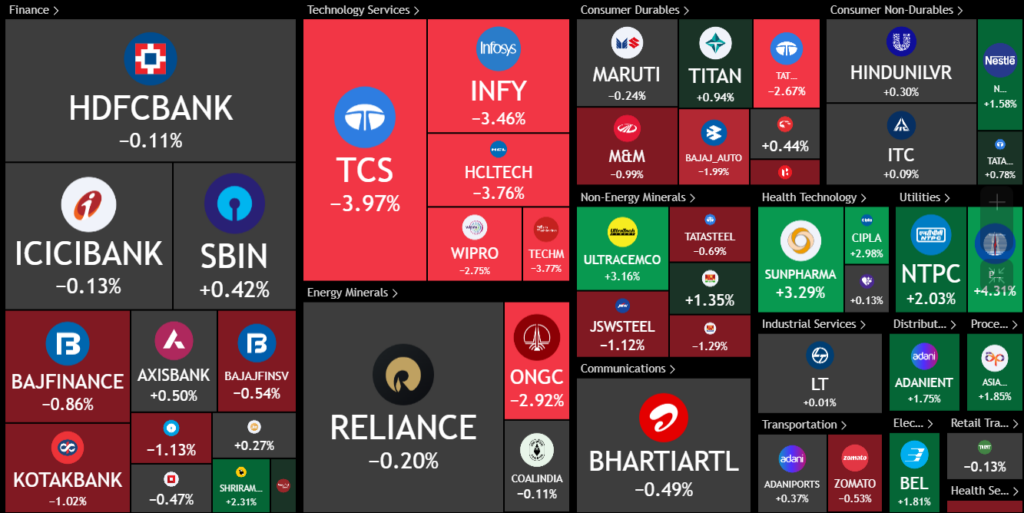
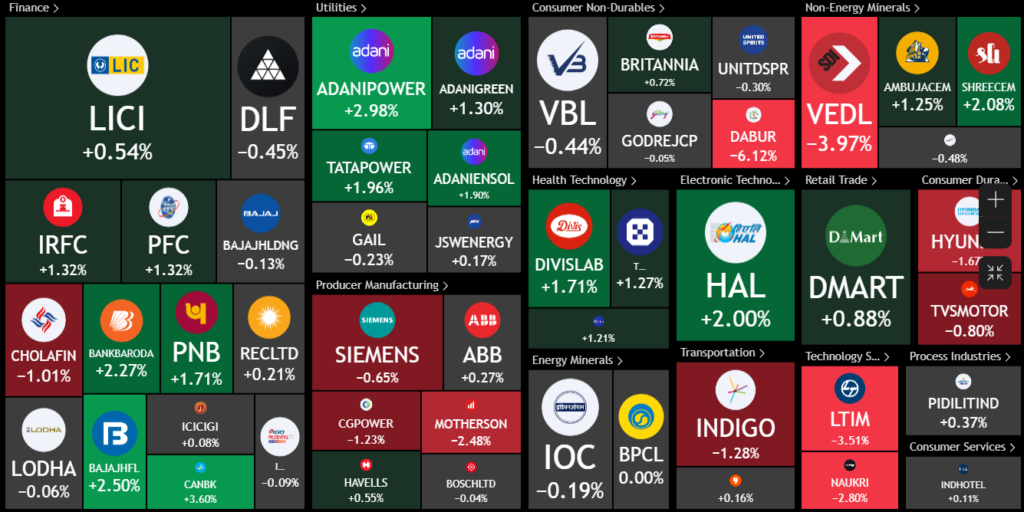
Sectoral Overview
Looking at sectoral trends, the Pharma sector was the best performer, up 2.3%, followed by Defense stocks, which are maintaining their lead. PSU banks were up by 1.9%, and CPSC stocks rose 1.2%. However, the IT sector is facing significant pressure, with some major players down by over 4%.
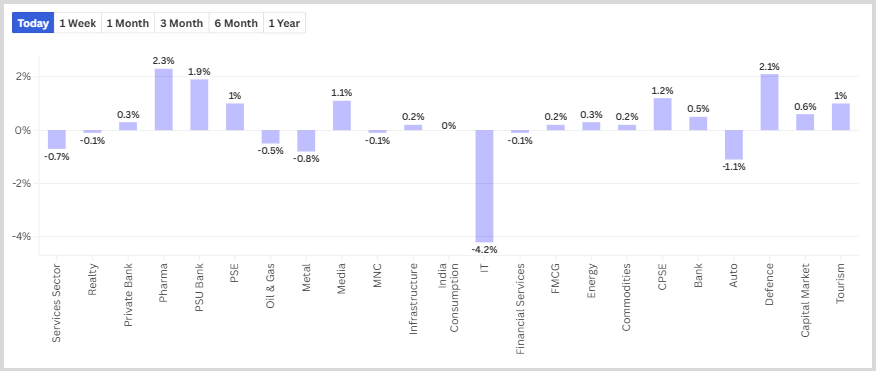
Sectors of the Day
Nifty IT Index
The chart for the IT sector is currently looking like a nightmare, with several stocks seeing substantial declines.
It seems that significant selling has been triggered by thematic IT funds, and while IT stocks are down now, they could potentially bounce back if the US market turns around.

Story of the Day : Is the Trump Tariff a Big Threat?
Now, let’s discuss the Trump tariffs in more detail. The White House has released a chart showing tariffs imposed on various countries, including India. According to their calculations, India faces a 26% tariff, but India imposes a 52% tariff on US goods. This reciprocal tariff structure has sparked a lot of discussion. Some analysts argue that the methodology behind calculating these tariffs is flawed, which could make the entire tariff situation less severe than it initially appears.
Impact of the Tariffs on the US and Global Trade
History has shown that tariffs in the US are nothing new, but for the past century, tariffs have generally been decreasing. What we’re seeing now is a sharp increase, which may just be a temporary blip — like what we saw in the 1920s. From the US perspective, imposing tariffs may be a way to protect its manufacturing industry, bring jobs back home, and ensure fair trade. Countries like India also protect their industries by imposing tariffs, so this is a natural part of the global trade system.
However, the US may suffer the most from these tariffs. For example, if the US imposes a 20% tariff on footwear, the price will rise from $100 to $120, leading to inflation in the US. This would create pressure on US consumers, and the country would have to compensate for these price hikes through tax cuts or subsidies. A significant inflationary effect is expected, which could lead to a recessionary trend in the US.
India’s Position: Can We Dodge the Tariff Bullet?
India is in a unique position. India’s exports to the US account for only 2% of its GDP, which is much lower than many other US trading partners like Vietnam, Taiwan, and Thailand. Furthermore, India maintains a trade surplus with the US, meaning that even with the tariffs, the impact on India’s economy will be relatively limited.
Certain sectors, such as pharmaceuticals, are largely unaffected by the tariffs. India exports significant amounts of drug formulations, which are exempt from tariffs, so these exports will continue as usual. Other sectors like telecom instruments, precious stones, and iron and steel are also minimally impacted.
However, sectors like jewelry, marine products, and cotton fabrics might face some headwinds. IT services, which make up a significant portion of India’s exports to the US, are also seeing a decline due to the tariffs, which is reflected in the drop in IT stocks.
The Future Outlook for India
Despite these challenges, India’s relative competitiveness is set to improve. Countries like Bangladesh, Vietnam, and Thailand, which are major competitors in textiles and apparel, will now face tariffs of up to 46%, putting India in a stronger position. In fact, India’s textile exports, worth nearly $10 billion to the US, may gain as rivals lose ground.
India’s strategy moving forward includes negotiating new trade agreements, strengthening ties with the US, and positioning itself as a viable alternative to China. With goals to increase trade with the US from $200 billion to $500 billion by 2030, India is preparing to capitalize on this global shift.
What Could Go Wrong for India?
While India is in a relatively good position, there are risks. If the US enters a deep recession, India’s export-heavy sectors like IT and textiles could face demand shocks. Additionally, the global uncertainty could disrupt long-term planning for exporters, and trade policy unpredictability could create challenges.
Moreover, if the US is retaliated against by China or other countries, it could lead to global supply chain disruptions, potentially impacting India’s position. However, it’s also possible that India could benefit from such shifts in the global trade landscape.
What Should Investors Do?
In such an unpredictable scenario, the best approach for investors is to stay nimble and be prepared for quick changes. Don’t make long-term bets on stocks vulnerable to these shifts. Focus on sectors that are showing momentum, such as pharma and defense, and be quick to identify and discard lagging stocks.
Having a well-balanced portfolio is crucial. If gold is part of your asset allocation, your portfolio has likely weathered this volatility better than others.

WeekendInvesting launches – The Momentum Podcast
Get ready to dive into an inspiring investing tale!
Join us on WeekendInvesting’s The Momentum Podcast Epsiode 1 as Mr. Yassar, a Dubai-based engineer-turned-investor, reveals his 15-year journey—from Wall Street fascination to mastering systematic trading.
Hear Alok and Yassar talk about Real estate, Gold, Crypto and many hard-earned lessons, and practical tips for navigating markets.
Disclaimers and disclosures : https://tinyurl.com/2763eyaz


